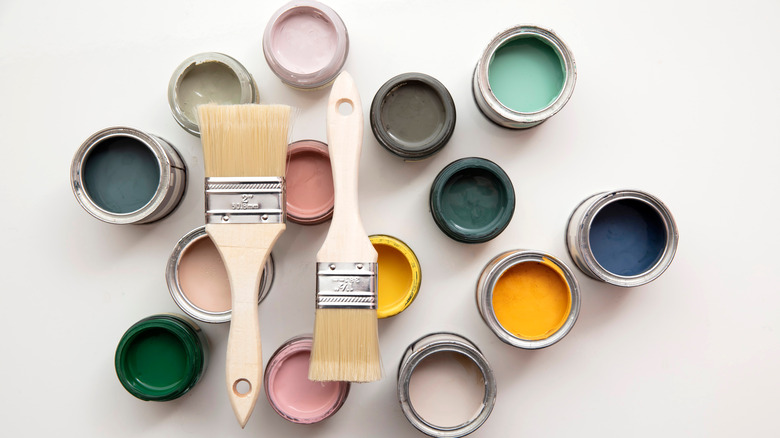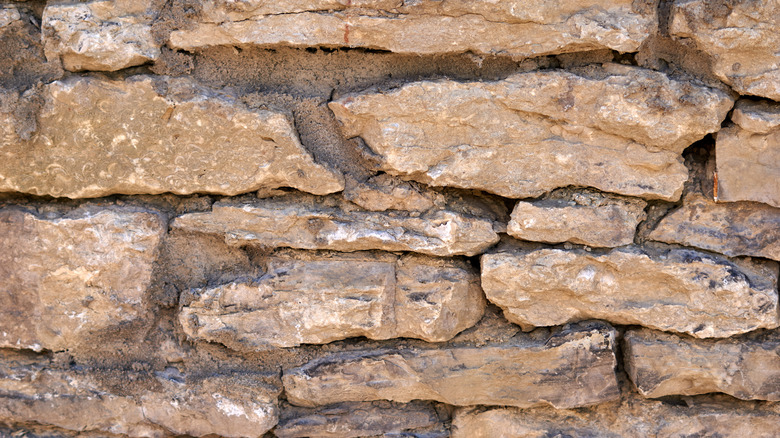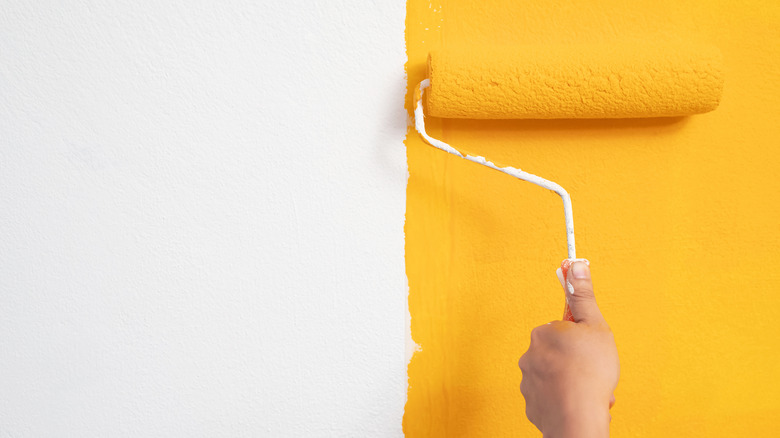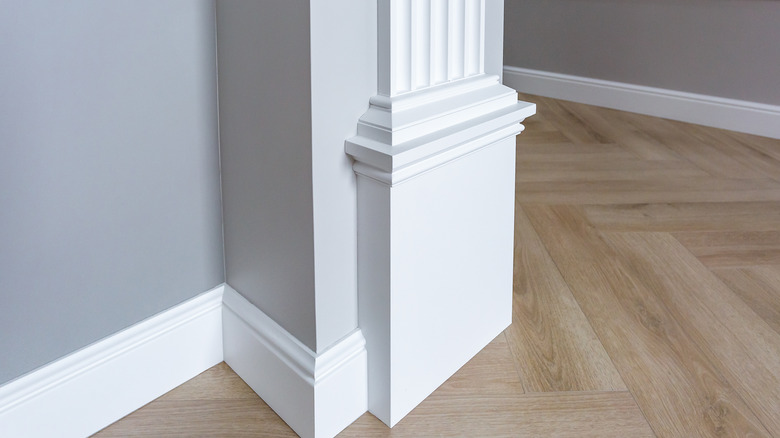How Much Paint Do You Really Need To Buy?
Painting a room is the easiest way to update your home and change your space in a drastic way. Whether you're moving into a new home and the previous owner did not share your taste in color scheme, or you're simply looking to refresh and update the space you're already in, a new paint job can be a simple and effective way to make your space feel more "you." It also has the potential to be expensive, stressful, and time-consuming if you're not careful, especially if you don't buy the right amount of paint for your project.
How many times have you gotten home from the hardware store, only to realize you didn't buy enough paint and have to make another trip to get more, or worse, you end up buying too much paint, wasting money on excess paint you will never use? It turns out that you don't have to go into the paint buying process completely blind. According to This Old House, the type and texture of the surface you are painting, the size of your project, and the color of the paint you choose all play a role in determining how much paint you need to buy.
Doing some calculations and measurements, as well as determining the condition of the surface you are painting before making a trip to the store can help you avoid unnecessary headaches and avoid breaking the bank on purchasing paint you don't need.
Consider the condition of the painting surface
According to Clare, textured areas take up more surface area, and porous surfaces absorb a lot of paint, both requiring you to buy more paint than you would when painting other types of surfaces. They recommend buying 20% more paint for porous or textured surfaces. You should also consider using a primer when painting these surfaces. According to Kilz, using primer before painting helps cut down on paint coats needed by cutting down on how much paint the surface will absorb.
The color of the surface and what color you're painting it also play an important role in determining how much paint you need. Clare stated that you will need more paint to cover darker colors with lighter colors than vice versa — and primer will help with this, too. If you're going from a light color to a darker one, you can save money by skipping the primer and buying less paint.
How much paint do you need for walls?
Determining the square footage of the room you are painting can help you figure out how much paint you will need to buy, which can be found by a few simple measurements and calculations. According to This Old House, you can determine the square footage of your paint job by measuring and adding up the length of all the walls that need to be painted, from one end to the other. Multiply that number by the height of the walls from the floor to the ceiling. To determine how many total gallons of paint you will need, divide the square footage of the room by the approximate coverage of one gallon of paint, which is estimated to be about 400 square feet.
If any of the walls you are painting have windows or doors, Behr said to subtract the square footage of each door or window from the total square footage of the room, keeping in mind that the average window is 15 square feet, and the average door is 20 square feet.
How much paint do you need for trim?
If you are planning on painting trim, you will likely need to calculate the amount of trim paint you will need separately from your wall paint, unless you are planning on painting them the same color and the same finish. According to This Old House, a room's baseboards, windows, doors, and crown molding are often painted in a different finish or color than the walls and ceiling, meaning you will likely need to purchase a different paint entirely.
In order to determine how much trim paint you need, they recommend starting by measuring the length and width of the trim that you need to paint and then multiplying those two measurements to get the total square footage. Then, multiply the square footage by 400 to get the number of gallons you will need for one coat of trim paint. If you prefer to estimate, they recommend buying no more than a quart or two of trim paint, as most standard rooms need less than a gallon.



